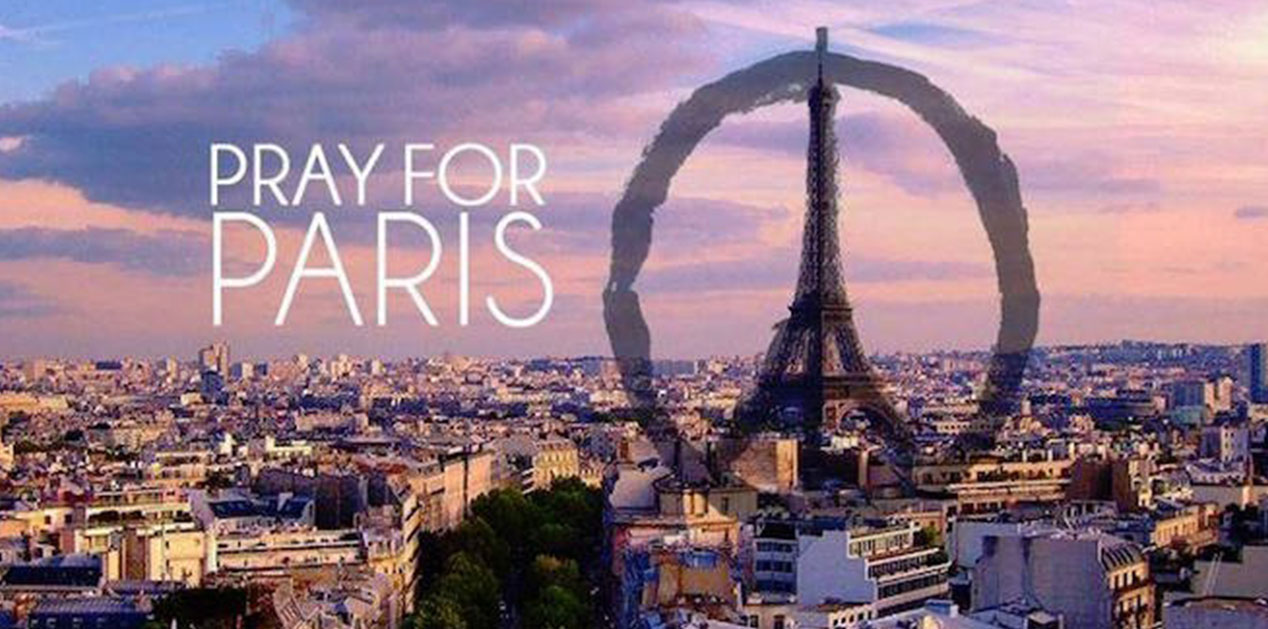Ever since the international community, particularly under the leadership of the United States (US), began its anti-Daesh (ISIS) coalition military campaign in late 2014, a debate had started, and it is still continuing, over the likely impact this operation on each of the participating countries and the Daesh itself.
An end of the year assessment giving Western perspective of the developments said that even as the terror outfit began losing control over some of the territories that it had captured between 2014 and mid-2015, serious concerns are being raised by various security establishments, about the return of the foreign fighters back to their native countries, with extremely radicalised mind-set and battlefield experiences. The ISIS recruits, mostly from France and Belgium, in fact, began exhibiting their proclivity for carrying out operations abroad and their plans came to fruition a little later. Gradually, the rising cases of “lone-wolves” activism and “home-grown extremism” added to the magnitude of the problem. While these were not entirely a new phenomenon, its revival at a previously unknown scale did worry strategic observers.
The terror attacks that took place in the US and a few European Union (EU) countries in recent times, had something—directly or indirectly—to do with this outfit. These also signalled the exponential rise of radicalisation which has increasingly become an inevitable ingredient for violent extremism. While the real motive behind the upsurge of terror incidents and their direct linkages with ISIS are still being ascertained, the recently-staged Berlin attack earlier this month needs to be put in perspective.
Beginning with the attack on the Jewish Museum in Brussels in May 2014: the first Daesh-directed attack in Europe, the continent has been victim of several other carnages. The November-2015 Paris attack, for instance, brought to the fore for the first time the successful export of Daesh’s terror activities abroad and marked a paradigm shift in its tactics. This well-planned brazen attack which was carried out by a coordinated group of recruits, who were trained and had earlier served in Syria, also illustrated the capability of the outfit to target its enemies wherever it wished to at an opportune moment. Similarly, the bombings in Brussels in March this year further raised the profile of Daesh as an organisation which has successfully spread its tentacles far and wide—physically and ideologically—and in terms of its network strongly tied to the leaderships in Syria and Iraq. While these major attacks were executed with the direct involvement of the outfit’s fighters operating in Europe, the case of lone-actors/wolves, who are inspired or influenced by it and other groups are also simultaneously rising. However, not all of these lone actors are “alone” in the real sense of the term, for a few of them had some connections or affiliations either with Daesh or other groups, including Al-Qaeda. Activities of such individuals have already been witnessed in the US, and the mass shoot-out by Omar Mateen in Orlando in June this year is an example thereof. Although the activist reportedly pledged allegiance to Daesh just before his death, his case exposed the influence of extremist ideology propagated by groups like Daesh on youths for all the reasons ranging from jihadist ambitions to personal and socio-political grievances. Further, the bombing and knifing incidents in New Jersey, New York and Minnesota in September raised several debates in the US about who actually the lone-wolves are, their objectives and whether they have affiliations with any overseas terror organisations, let alone Daesh. As a result of this, authorities in the US are now closely examining the angle of home-grown extremism through offline/online radicalisation and whether extremist ideologies from abroad have been imported to the country.
The focus of outfits like Daesh on Western interests have intensified after it started losing territories in its core epicentres-Iraq and Syria. Surviving leaderships from these countries constantly called on their fighters/supporters/sympathisers to carry out attacks the world over. Daesh’s spokesperson, Mohammad al-Adnani, who was later killed in an airstrike in northern Syria in August this year had said, “If you can kill a disbelieving American or European-especially the ‘spiteful and filthy’ French, or an Australian, or a Canadian, or any other disbeliever waging war, including the citizens of the countries that entered into a coalition against the Islamic State, then rely upon Allah, and kill him in any manner or way, however it may be”. Such statements might have appeared to be mere rhetoric, yet the developing trends seem to suggest that such calls are still having considerable takers. Al-Adnani had gone on to say that, “Lone wolf attacks in the US and Europe were “dearer to use than the biggest actions by us” in Iraq and Syria. Many of attackers in Paris were reportedly directly tasked by Al-Adnani. This aspect is highlighted here to underline the importance of social media-driven propaganda mechanisms adopted by Daesh but not to give credit for all that is happening in the Western world. Even in the 15th edition of Dabiq, the English-medium propaganda publication, a specific section was devoted on why Daesh hates “the West” and the “Christians” and six points were identified as to why its fighters will continue to hate and fight against the “infidels” or “disbelievers”. This clearly indicated an extremely sectarian overtone of this Sunni terror group and even exhibited this by hacking to death a priest in France in July. This could well corroborate the growing incitement of hatred for religions other than Islam. And this is an emerging strategy (to destabilise the society) which the outfit and its ardent supporters are aiming to adopt, especially in Europe.
In the recent months, security-intelligence establishments in the US and Europe have constantly warned of imminent attacks from jihadist groups. Their threat perceptions have increased manifold due to the ongoing coalition military operations in Iraq and Syria. These threats come from both terrorist and radicalised elements who are aground, particularly in Europe. As it is, during the last few months, several low-scale attacks were reported from Germany, Belgium, France and the US, too. Although Daesh has mastered the art of calling these perpetrators as its “soldiers”, not all the attacks were its handiwork. But, the rising trend of individuals taking the path of terror is fitting well into Daesh’s scheme of things. This is going to be a serious security challenge, particularly in Europe which is currently witnessing a deadly amalgamation of foreign-fighter returnees, domestically radicalised people, criminals and also the migrants.
While the concerned authorities have been able to foil certain terror plans, the attack on Christmas shoppers in Berlin highlighted the difficulties in detecting and thwarting attempts from fringe elements. The nature of this attack perpetrated by a Tunisian named Anis Amri, also fits well into the changing modus operandi of Daesh although their direct connection is yet to be established. The use of vehicle as a tool to target selection (both the venue and audience) have been widely published in the last two editions of a relatively new English magazine of the outfit-Rumiyah. The magazine even considered the Nice attack in France in July (killing 86 people) as a “prime example” and talked of similar attacks in the US and Europe during this holiday season. Moreover, Daesh-related intelligence have been unearthed from Syria recently and found the mentions of “external operations” and threats in both these regions.
An extract from Rumiyah reads: “Though being an essential part of modern life, very few actually comprehend the deadly and destructive capability of the motor vehicle and its capacity of reaping large numbers of casualties if used in a premeditated manner”. The first edition of the magazine called for more ‘lone’ attacks and even gave a detailed description on the types of knives to be used by “jihadists” and to intensify their activities in “quiet neighbourhoods, beaches, allays and forests for a reasonable kill count”. It is very telling that these methods have been increasingly used in the recent times during both inspired/directed attacks.
Daesh has been able to franchise its operational tactics and ideology effectively regardless of who the receivers are. This will, in all likelihood, uphold its relevance in the Western world even as the outfit continues losing grounds in West Asia. Threats from this organisation will continue to be real as these are not only undetectable lone-wolves or individuals but also organised network of sleeper cells. As witnessed already, following the astounding attacks in Belgium and France, most of the threats are now coming from sympathisers and supporters who are apparently paying heed to the outfit’s call mostly channelled through social media. Both these types of people are at large in Europe while the US has more of sympathisers/inspired lots and, therefore Daesh and others like Al-Qaeda and Jabhat Fateh al-Sham (formerly Al-Nusra Front), in the Western assessment, will continue to pose significant threat to these countries for some time to come. But this does not mean that they pose any lesser degree of threat to Western interests in other parts of the world. Under such circumstances, counterterrorism measures are going to be overwhelming, challenging, taxing and mammoth.
Published Date: 27th December 2016, Image Source: https://encrypted-tbn1.gstatic.com











Post new comment